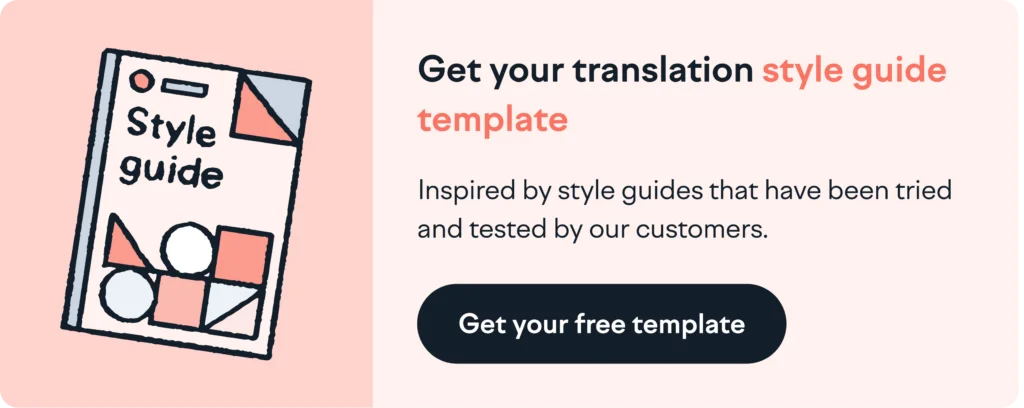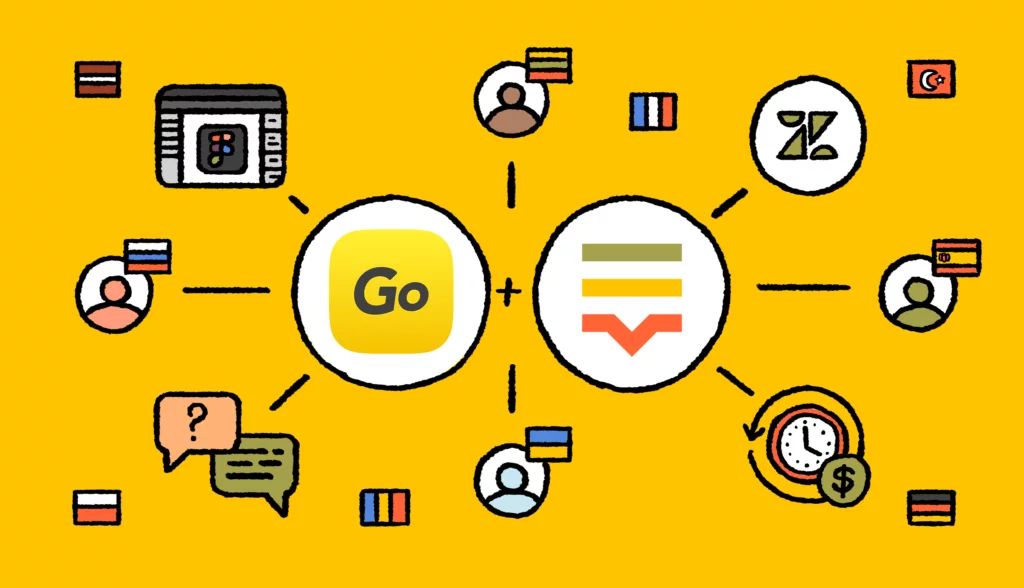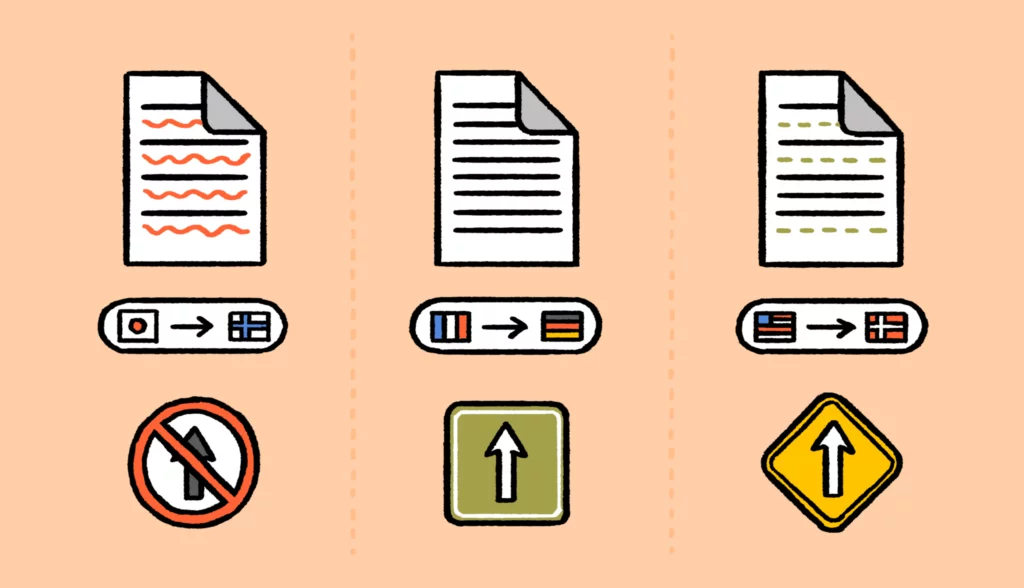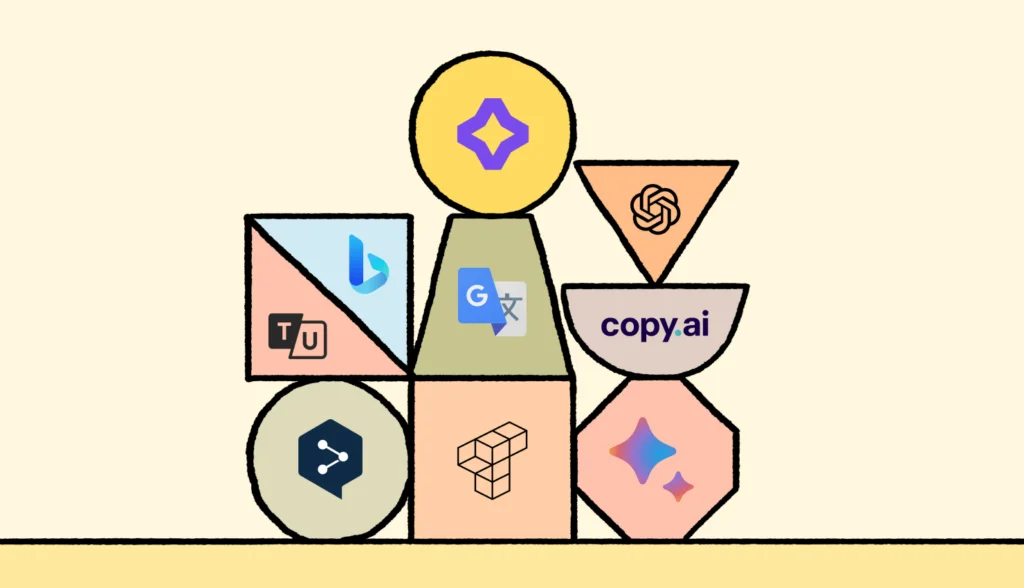Breaking down language barriers is critical when entering new markets.
When you do business with customers in their mother tongue, their perception of you changes. You become more credible.
You reduce barriers to entry, improve customer experiences, and build brand trust.
The outcome: individuals are 12x more likely to engage with you.
But language barriers don’t just refer to language differences.
Simon Sinek, author of Start with Why, highlights the language barriers that exist even when you speak the same language :
“I remember a trip I took to Australia. One day I was on a bus and heard an American accent. I turned and struck up a conversation. I immediately felt connected to them, we could speak the same language, understand the same slang. As a stranger in a strange city, for that brief moment, I felt like I belonged, and because of it, I trusted those strangers on the bus more than any other passengers…. No matter where we go, we trust those with whom we are able to perceive common values or beliefs.”
To help you understand the full spectrum of language barriers, their impact on international business, and how to overcome them, follow along below.
First up, a quick overview of what language barriers are.
What are language barriers?
Language barriers are any barriers in communication between people that lead to misunderstandings.
💡Essentially, language barriers can fall under two main categories:
1. Linguistic barriers: challenges in direct translation and understanding of words and phrases between languages.
2. Cultural barriers: challenges include customs, values, social norms, and contextual understanding that go beyond mere language translation.
Linguistic differences are often the first barrier to communication.
You need to translate words and phrases so messages can be understood.
Cultural differences are a second-level communication barrier, which makes it harder for people to connect.
Think about the friendships you’ve made. You likely have shared beliefs, cultural understandings, hobbies, and traditions that give you a sense of belonging.
Maybe you like the same baseball team, went to the same university, or come from the same neighborhood, city, or country.
So, if cultural preferences vary wildly in a target market, and you don’t adapt your products or services so they’re culturally relevant, it’s going to be harder to break down barriers and do business there.
Translation is an excellent place to start.
But, as Caroline Ren, Product Marketing Manager at Webflow, explains: “Translation is just one small sliver of localization.”
“Localization can be anything from content to imagery to the people depicted and lifestyle photography. If you have UI shots, you need to make sure the text is translated.”
Different regions also have different preferences for design. Colors and symbols that work in one country might not work in another. The same goes for user experience. Content, products, and services should flow as people expect, whether payment or reading preferences (e.g. from right-to-left or left-to-right).
Most common types of language barriers and impacts on business
For effective global communication, create a checklist of all the language barriers you could encounter.
A good place to start is to jot down how you communicate (emails, ads, websites, apps, etc) with your customers and prioritize the most important platforms. Then check which types of language barriers apply to each one.
Spoken language and dialects
In some languages, errors in tone can completely change the meaning of words. Take the word xióngmāo (panda) in Mandarin, for example.
The word xiōngmáo is spelled the same but has a slight accent change that alters the pronunciation, which changes the meaning to chest hair.
Then there’s the confusing case of homophones – words that are pronounced the same but have different meanings (and often spellings).
🐶
Same sound, same-spelling, different meaning
A dog bark
Tree bark
🌲
Same sound, different spelling, different meaning
There’s a bear outside
The room is bare
Imagine not being a native speaker and having to pay attention to these subtle differences!
Even when you speak the same language or speak – let’s say English – as a second language, different dialects can make it difficult for people to understand each other. Dialects often have unique words or phrases that are not used in other variants of the language. Strong accents are also a common cause of misunderstandings
There’s no quick fix to tackle verbal language barriers in business.
Either you get your customer-facing teams to learn new languages or hire people who speak the local languages of your international markets.
Grammar, syntax, and formatting in written communication
Grammar, syntax, and formatting differences can create language barriers and lead to more back-and-forth communication than intended – going from confusion to frustration and finally, lack of trust.
Think about something as simple as dates. In Europe 10/02/2024 is 10th February, 2024. In the States, it’s 2nd October, 2024. Imagine booking a meeting with someone who uses a different date format, and they fail to show up. You end up exchanging several emails before realizing the error.

When it comes to written communication, customers often want quick responses, especially when reaching out to customer services. It’s likely that you copy and paste translations from Google Translate or DeepL, or use a language service provider. But this is likely increasing your response times, leaving customers getting more and more frustrated as time goes by, and not completely solving language barriers – we all know machine translations aren’t always accurate.
Technical jargon in business
Industry jargon can be a huge language barrier, not just for those reading text but also for those translating it. If you can avoid technical jargon, all the better. But in some industries, like healthcare, finance, and legal services, it’s impossible.
To effectively communicate technical technical jargon in another language, you’ll often need to call in linguistic and industry experts. Or provide translators with as much context as possible.
Think visual context, and any other commentary that you think would help translate technical jargon.
Another solution is to use translation management tools with built-in glossaries and translation memory, so once you’ve translated something, it can be translated again consistently wherever it appears.
Colors, symbols, and imagery in design
Colors, symbols, and imagery speak volumes. Their meanings vary wildly from one country and culture to another, so you mustn’t get caught out when promoting your brand in another country. Customers should believe you’ve tailored your communication for them.
Customers will know if you’ve gone that extra mile to understand how to communicate in their language. Not to mention, they’ll be less confused if you use the correct symbols, colors, and imagery.
Caroline Ren uses Japan as an example:
“From a marketing perspective, anything Japanese needs to be really bespoke. And if it’s not resonating, then people are not going to engage. One of the companies I worked for had a different logo in Japan because the previous logo didn’t resonate positively. And so this is the stuff that can kind of make or break”
Navigating these barriers of communication is important if you want to build trust and succeed in new markets. So let’s take a look at how you can overcome them.
How to overcome language barriers?
Learn new languages
Nothing opens your mind to diverse perspectives and lets you empathize with other cultures than learning a new language.
Learning a foreign language like Spanish or Mandarin can be beneficial, but it takes time to learn languages and businesses don’t have time to wait until employees are good enough in any given language to start communicating with customers in their native language.
That being said, offering language classes does demonstrate a commitment to fostering a multilingual and inclusive workplace. By recognizing the value of linguistic diversity, businesses can enhance their cultural understanding.
Build a remote team
Building a remote workforce means that you’ll have a huge pool of different cultures and languages to tap into. Additionally, you’ll cultivate a multilingual business environment and emphasize respect for linguistic diversity to create an inclusive and productive workplace.
As a localization and translation management company, there was never any question about building a fully remote team. Our mission is to break down borders and create a world where choice isn’t limited by language, and a remote team helps us better understand language barriers and how to overcome them.
By embracing diverse perspectives and expertise, we enhance our multicultural global translation and localization efforts, ensuring we deliver high-quality, culturally relevant content to clients across the globe.
While most Lokalisers are based in Europe, the diversity of backgrounds is striking, with all continents except Antarctica represented. Currently, we have colleagues with a registered base in more than 44 countries around the world, not only in all corners of Europe, but also in many diverse places in Asia as well as South, Central, and North America.
Use plain language
It’s always best to use plain language when you can so that your products and services are clear to the majority. This means avoiding jargon and complex sentence structures or language where possible.
Also, keep in mind the audience. What works in one country might not work in another. Humor, for example, is well-received in a business context in some countries but not in others.
Humor is also notoriously difficult to translate.
If something is humorous, you need to make sure it’s funny in German in the same way that it is in French. Often there’s no direct translation for humor, so you have to get creative with your translations.
Translate your content
TAs globalization becomes the business standard, more and more industries are translating their content because it plays a crucial role in bridging cultural gaps, facilitating effective communication, and driving business growth.
76% of online consumers prefer to buy products with information in their native language, illustrating the immense value of translation for businesses.
Translation does not mean translating content word-for-word.
It encompasses the art of conveying ideas, making them accessible, and engaging to new audiences in different languages.
Depending on your industry, you’ll need to choose which types of translations work for you.
💡Remember: translation means capturing more than just words – it’s about catching the meaning behind them, with a tone that’s just right for your audience.
Localize your content
Localization goes a step further than translation in breaking down language barriers.
Translation is often the first step in the localization process. Next, you’ll need to adapt design, user experience, formatting, cultural elements, tone, slang, and more, to make sure nothing feels out of place.
Elements to consider during localization
• Text
• Popular culture
• Slang
• Holidays and traditions
• Dialects
• Tone
• Humor
• Legal requirements
• Reading preferences: RTL or LTR
• Color
• User interactions
• Lifestyle photography
• UI shots
• Text on images
• Pricing and currency
• Payment preferences
• Formatting (dates, time)
There is a lot to think about when localizing content, and it’s not easy keeping teams on the same page. You need to involve developers, designers, marketers, and translators – teams that all work with different tools, and file formats, and have different priorities.
🛠️ There is a tool for localization
Lokalise is a translation and localization platform that helps businesses manage their translation and localization processes. It’s a single source of truth, where every team can connect their tech stack through out-of-the-box integrations and work together to create a fully localized experience.
Create a borderless business
If you fail to break down language barriers before entering new markets, you risk missing out on a huge opportunity: building trust among customers from the very beginning.
It’s not often customers will give you a second chance.
By understanding the impact of language barriers and implementing practical strategies to overcome them, you’ll achieve success on a global scale.
Using reliable translation services and tools, building a remote team, and localizing your content are just a few strategies that can help you go global with a bang.
Take a look at how these global companies overcame language barriers.





